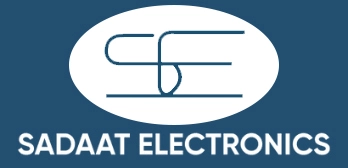No products in the cart.
Vertical Freezers
Showing all 3 results
- Dawlance Freezers, Dawlance Vertical Freezers, Freezers, Refrigerators, Vertical Freezers
DAWLANCE FREEZERS 1035 (INV) White
 Dawlance Freezers, Dawlance Vertical Freezers, Freezers, Refrigerators, Vertical Freezers
Dawlance Freezers, Dawlance Vertical Freezers, Freezers, Refrigerators, Vertical FreezersDAWLANCE FREEZERS 1035 (INV) White
- 55% Less Energy Consumption with Inverter Technology
- Operates on as low as 120v
- Consumes 33% less space
- Easy to organize 7 multiple compartments that also prevents from odor mixing
- No More bending
- Works on Solar, UPS & Generator
- 12 years compressor warranty
SKU: n/a - Dawlance Freezers, Dawlance Vertical Freezers, Freezers, Refrigerators, Vertical Freezers
DAWLANCE FREEZERS 1035 GD (INV)
 Dawlance Freezers, Dawlance Vertical Freezers, Freezers, Refrigerators, Vertical Freezers
Dawlance Freezers, Dawlance Vertical Freezers, Freezers, Refrigerators, Vertical FreezersDAWLANCE FREEZERS 1035 GD (INV)
- 55% Less Energy Consumption with Inverter Technology
- Operates on as low as 120V
- Consumes 33% less space
- Easy to organize 7 multiple compartments
- No More bending
- Works on Solar, UPS & Generator
- 12 years compressor warranty
SKU: n/a - Dawlance Freezers, Dawlance Vertical Freezers, Freezers, Refrigerators, Vertical Freezers
DAWLANCE FREEZERS 1035 Vertical GD
 Dawlance Freezers, Dawlance Vertical Freezers, Freezers, Refrigerators, Vertical Freezers
Dawlance Freezers, Dawlance Vertical Freezers, Freezers, Refrigerators, Vertical FreezersDAWLANCE FREEZERS 1035 Vertical GD
- Consumes 33% less space
- Robust & European quality product
- Static technology for high temperature areas
- Organized compartments with no mixing of odors
- Premium look with Glass desig
n
- Easy to Clean sliding drawers
SKU: n/a
Vertical Freezers — Price in Pakistan 2025, Sizes, No‑Frost & Buying Guide
Sadaat Electronics offers a curated range of Vertical (Upright) Freezers—ideal when you want organised shelves, fast access, and a slim footprint. This page explains 10–14 cft sizes, No‑Frost vs manual defrost, inverter/energy‑saving options, glass‑door commercial uprights, and how vertical freezer price in Pakistan is shaped in 2025. You’ll also find a simple checklist for choosing the right model and city‑specific tips for Karachi, Lahore, and Islamabad. For availability and today’s bill‑to‑bill quote with official warranty, call +92330-9997564 or visit us in Saddar, Karachi.
Why choose a vertical (upright) freezer?
| Advantage | What it means for you |
|---|---|
| Organised shelves & drawers | Easier inventory; less digging for items at the bottom. |
| Smaller floor footprint | Fits beside a fridge or in a pantry; good for apartments. |
| Quick access | Opens like a fridge; ideal for daily cooking routines. |
| No‑Frost options | Automatic defrost; no ice scraping; stable airflow. |
Vertical Freezer Price in Pakistan (2025 — how pricing works)
Live prices move with size (10/12/14 cft), technology (No‑Frost vs manual), compressor type (standard vs inverter), finish (glass door/solid), and seasonal demand. Use the planning table below to set your budget tier. For an exact official warranty ticket and delivery options in Karachi · Lahore · Islamabad, call our team for a live quote.
| Size | Typical use | Features to target | Budget stance* |
|---|---|---|---|
| 10 cft | Small apartments; secondary freezer | Adjustable shelves; quick‑freeze zone | Entry → Mid |
| 12 cft | 3–4 person families | No‑Frost; inverter; door alarm | Mid |
| 14 cft | Larger families; batch cooking | No‑Frost; fast‑freeze drawer; interior LEDs | Mid → Upper |
| Glass‑door commercial | Shops, cafés, bakeries | Self‑closing door; illuminated canopy | Upper |
Key technologies (shopper’s summary)
No‑Frost (Frost‑Free)
Circulates dry, cool air to prevent ice build‑up. You get even temperature, faster pull‑down, and no messy defrost days.
Inverter compressor
Adjusts speed to demand for smoother cooling and lower power spikes—useful near bedrooms or quiet kitchens.
Door alarms & lock
Audible alerts help protect stock; locks prevent accidental openings in shops and homes with kids.
Fast‑freeze drawer
Dedicated zone to rapidly drop temperature for fresh meat and desserts; improves texture after thawing.
Glass‑door display
For commercial use: see stock without opening; self‑closing hinges save energy during busy hours.
Which size should you buy?
Pick based on your weekly cooking pattern and the largest batch you store, not just headcount. Use this quick guide:
- 10 cft: 1–3 people; snack boxes, ice cream, frozen veg; minimal meat stock.
- 12 cft: 3–4 people; weekly portions of chicken/fish, parathas, and leftovers.
- 14 cft: 4–6 people; batch cooking and more meat variety.
- Glass‑door upright: for cafés/shops where visibility matters.
Upright vs chest (single/double door)
| Aspect | Vertical (upright) | Chest (single/double) |
|---|---|---|
| Floor space | Narrow footprint | Wider footprint |
| Access & organisation | Shelves & drawers; easy access | Baskets; requires bending/reaching |
| Cold‑air loss on opening | Higher (air falls out) | Lower (cold air stays in) |
| Best for | Daily cooking and frequent access | Bulk meat storage and long‑term stockpiles |
Capacity × routine (planning matrix)
If you open the door often or store containers taller than 15–20 cm, move one size up to keep airflow clear around shelves.
| Your routine | Suggested size | Why it fits |
|---|---|---|
| Daily cooking with quick access | 12 cft | Balanced shelves for portions and boxes. |
| Weekend batch cooking | 14 cft | Extra drawer space avoids cramming. |
| Snack/ice storage + occasional meat | 10 cft | Compact width without sacrificing essentials. |
| Shop café display | Glass‑door upright | Visibility + self‑closing door saves energy. |
Brands shoppers ask for (Haier · Dawlance · PEL)
Haier
Strong No‑Frost lineup with practical shelf layouts and door racks; compare door‑alarm behavior and shelf weight limits.
Dawlance
Local service footprint; value‑forward models and select inverter options in the vertical range. Confirm shelf adjustability and drawer depth.
PEL
Competitive capacities in upright form; check gasket seal quality and interior lighting for late‑evening access.
How to match model codes (avoid mistakes)
- Match the rating label on the unit to the invoice model code and listing title.
- Cross‑check capacity (cft/L), defrost type (No‑Frost/manual), compressor (inverter/standard), and door type (solid/glass).
- Ask whether accessories (extra shelves, keys) are included or billed separately.
Installation, placement & safety
- Clearance: Leave 10–15 cm around sides/back; avoid ovens and direct sun.
- Level & ventilation: Level feet reduce door drift; ensure top vents are not blocked.
- Power: Use a grounded outlet and a surge protector; avoid thin extension cords.
- Door swing: Measure corridor width and hinge side for apartment kitchens.
Energy & usage tips (Pakistan)
- Set temperature sensibly; avoid the coldest setting unless required for rapid pull‑down.
- Cool cooked food before loading; hot items raise cabinet temperature and spur frost.
- Group high‑use items on one shelf to shorten door‑open time.
- Clean door gaskets monthly; replace if cracked to keep seals tight.
No‑Frost vs manual defrost
No‑Frost models circulate air around an evaporator and auto‑defrost condensate. They keep shelves clear and temperature even—ideal for busy families and shops. Manual‑defrost uprights are simpler but require periodic defrosting when frost exceeds ~5 mm, otherwise efficiency drops and door seals strain.
Care & troubleshooting (quick fixes)
- Ice near the door? Check gasket for crumbs; wipe and warm‑seal by running your fingers along the edge.
- Door pops open after close? That’s normal pressure equalization; hold for a second or reopen after a minute.
- Cabinet feels warm at sides? Many uprights run warm edges to prevent condensation—keep vents clear.
- Unusual noise? Level the feet, check shelf seating, and ensure nothing touches the rear panel.
Commercial & glass‑door uprights
- Self‑closing hinges: keep doors shut during rush hours.
- LED canopy & interior lighting: improves product visibility and impulse sales.
- Night curtain (if available): limits cooling loss after hours.
- Castors & locks: easier cleaning and stock security.
City notes: Karachi · Lahore · Islamabad
Karachi: Coastal humidity—keep seals clean, use higher fan/no‑frost settings, and avoid sunlit corners.
Lahore: Winter smog/dust—wipe condenser grills more often; dust acts like a blanket on coils.
Islamabad/Rawalpindi: Measure stair turns and balcony doors for delivery clearance; uprights are tall.
Buying checklist (step‑by‑step)
- Measure the space and doorways; confirm hinge side and door swing.
- Pick your size (10/12/14 cft) and defrost type (No‑Frost/manual).
- Choose your feature set: inverter, door alarm/lock, fast‑freeze drawer, glass door (for shops).
- Match the model code and verify warranty on the invoice.
- Plan accessories: surge protector, extra shelves/bins, labels.
Example stocking plans (save time & energy)
- Family weekly plan: Keep high‑use items (nuggets, fries, parathas) on the middle shelf; batch‑cooked curries in labelled boxes on the lower shelf; desserts on top for quick grabs.
- Meal‑prep routine: Freeze in flat packs for faster pull‑down; stand packs vertically in bins by cuisine (Pakistani, BBQ, breakfast).
- Shop service flow: Put fast‑moving items at eye level; use shelf talkers; enable door alarm so staff close quickly.
Returns, warranty & documentation
We supply brand‑new, genuine units with official manufacturer warranty. Keep your stamped invoice and warranty card; service requests usually require both along with the model code and serial number printed on the rating label. Test on delivery day: verify cooling, door reversal (if applicable), shelf/drawer count, and included keys.
Quick glossary
- No‑Frost: frost‑free system that auto‑defrosts the evaporator.
- Inverter: variable‑speed compressor that matches cooling power to demand.
- Fast‑freeze: mode/drawer that drops temperature rapidly for fresh items.
Reduce energy without compromising food safety
- Open the door with a plan; group items by use frequency.
- Clean condenser grills every few months (if accessible).
- Keep a thermometer in the cabinet to verify safe zones.


